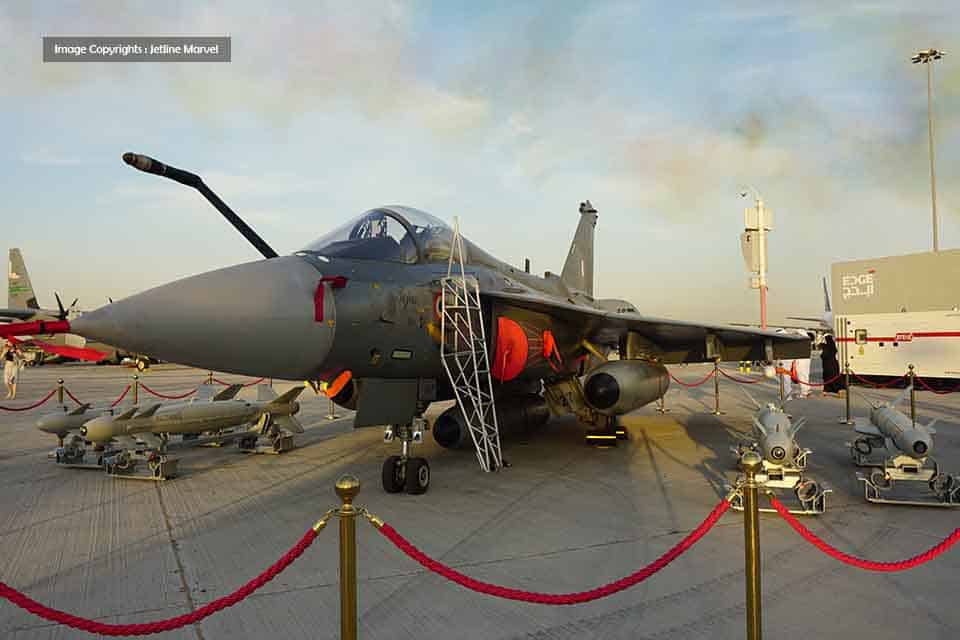Aerospace
First-Ever Crash Of Tejas Fighter Jet In Rajasthan’s Jaisalmer, Pilot Safe

Following the crash of the Tejas fighter jet, several questions have surfaced regarding its safety during operations.
The aircraft had recently undergone an upgrade to its next version, the Mark 2 version of Tejas, and was anticipated to receive higher orders from the Indian Air Force (IAF). Additionally, India had cleared budget approval for the development of the Advanced Medium Combat Aircraft (AMCA) Project, projected to be India’s first fifth-generation fighter jet aircraft. However, in the aftermath of this crash, the IAF has initiated an investigation to determine the cause of the accident.
A Tejas aircraft belonging to the Indian Air Force encountered a mishap during a training sortie in Jaisalmer, Rajasthan, crashing within the vicinity of a student hostel compound. The incident, occurring around 2 pm, witnessed the safe ejection of the pilot, with no reported injuries on the ground.
This marks the first crash involving the indigenous jet since its maiden test flight over two decades ago in 2001. Notably, the Tejas, a lightweight combat aircraft, was integrated into the Indian Air Force fleet in 2016.
The plane descended onto the grounds near the Lakshmi Chand Sanwal Colony, adjacent to the student hostel in Jaisalmer. Promptly, the Air Force has initiated an inquiry to ascertain the circumstances surrounding the incident.
“The Indian Air Force confirms the occurrence of an accident involving one Tejas aircraft during an operational training sortie in Jaisalmer today. The pilot has been successfully ejected. A thorough investigation, under a Court of Inquiry, has been set in motion to determine the root cause,” stated an official statement by the Indian Air Force.
The first squadron within the Indian Air Force to adopt the Tejas was the esteemed No. 45 Squadron, also known as the ‘Flying Daggers’, in 2016. Subsequently, the No. 18 Squadron joined the ranks in 2020, further bolstering the operational deployment of the Tejas.
Presently, the Indian Air Force has integrated 40 Tejas MK-1 aircraft into its fleet, with an additional 83 Tejas MK-1A fighters awaiting deployment as part of a procurement agreement valued at over ₹ 46,000 crore. Furthermore, in a recent development, the Defence Acquisition Council has given preliminary approval for the acquisition of 97 additional Tejas planes for the force, signaling a continued commitment to indigenous defense capabilities.

Aerospace
When Ratan Tata was denied entry to the airfield at the Aero India show, he waited

During our visit to Aero India 2019, we had the unexpected opportunity to see Ratan Tata at the event, which was a thrilling moment for us. However, there was a surprising hiccup when the security staff didn’t allow him to enter due to a lack of a security pass.
Despite this, he remained calm and patiently waited for about 20 minutes until a member of the Tata team brought him the required pass, after which he calmly proceeded inside. It was a humbling sight, showcasing his composed demeanor even in such situations.
Ratan Tata ji is not only a renowned industrialist but also a trained pilot, holding a pilot’s license. In 2007, he became the first Indian civilian to fly the F-16 Falcon during the Aero India show in Bangalore—a proud moment for the nation.
His passion for aviation extended beyond flying, as he played a key role in shaping India’s aerospace industry. Under his leadership, Tata ventured into manufacturing and maintaining aerospace components while upholding its legacy of quality. Notably, Tata’s collaboration with Airbus to develop and manufacture the C295 aircraft is a testament to its growing influence in the sector.
-

 Aviation2 months ago
Aviation2 months agoMicrosoft Flight Simulator Raises $3 Million to Bring Back the An-225 Mriya
-

 Airlines2 months ago
Airlines2 months agoQatar Citizens Can Travel to the United States Without a Visa
-

 Aviation2 months ago
Aviation2 months agoQatar Airways bans these new Electronic Devices on plane
-

 Airlines2 months ago
Airlines2 months agoJapan Airlines Rolls Out Free Domestic Flights to International Passengers
-

 Defence2 months ago
Defence2 months agoWhich Country Has the Largest Fleet of Fighter Aircraft?
-

 Airport2 months ago
Airport2 months agoWestern Sydney Airport Welcomes Its First Plane After 6 Years of construction
-

 Travel2 months ago
Travel2 months agoQatar Airways Launches Four Additional Flights from Amsterdam
-

 Aviation2 months ago
Aviation2 months agoDid you know ? Once Boeing 747 carried 1088 passenger in 1991








